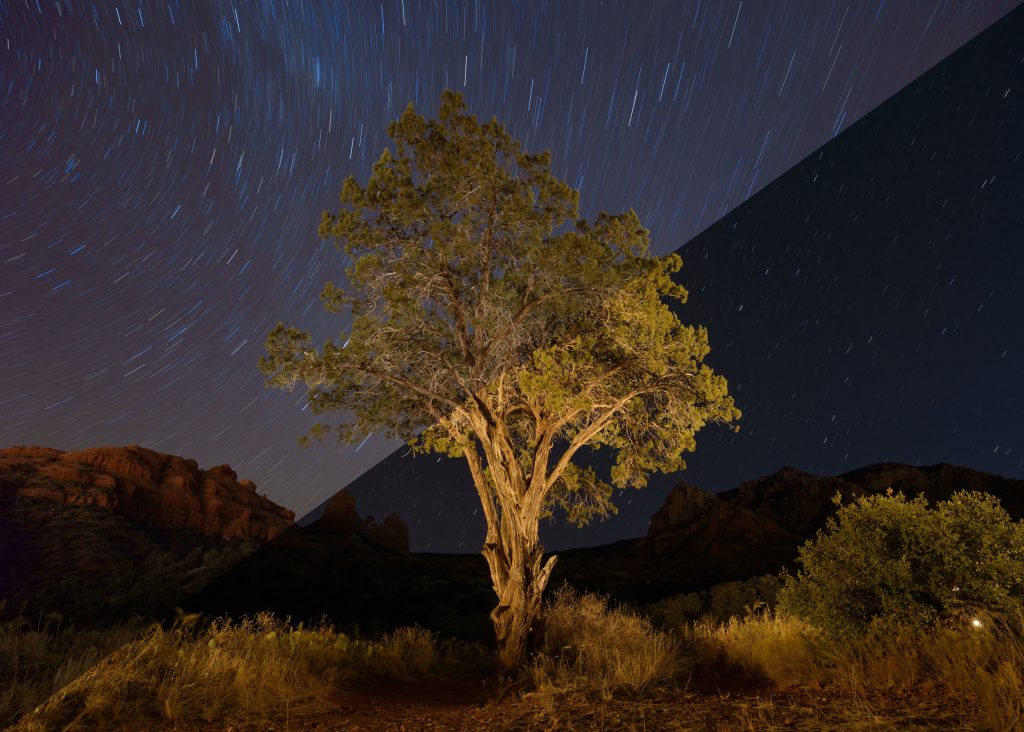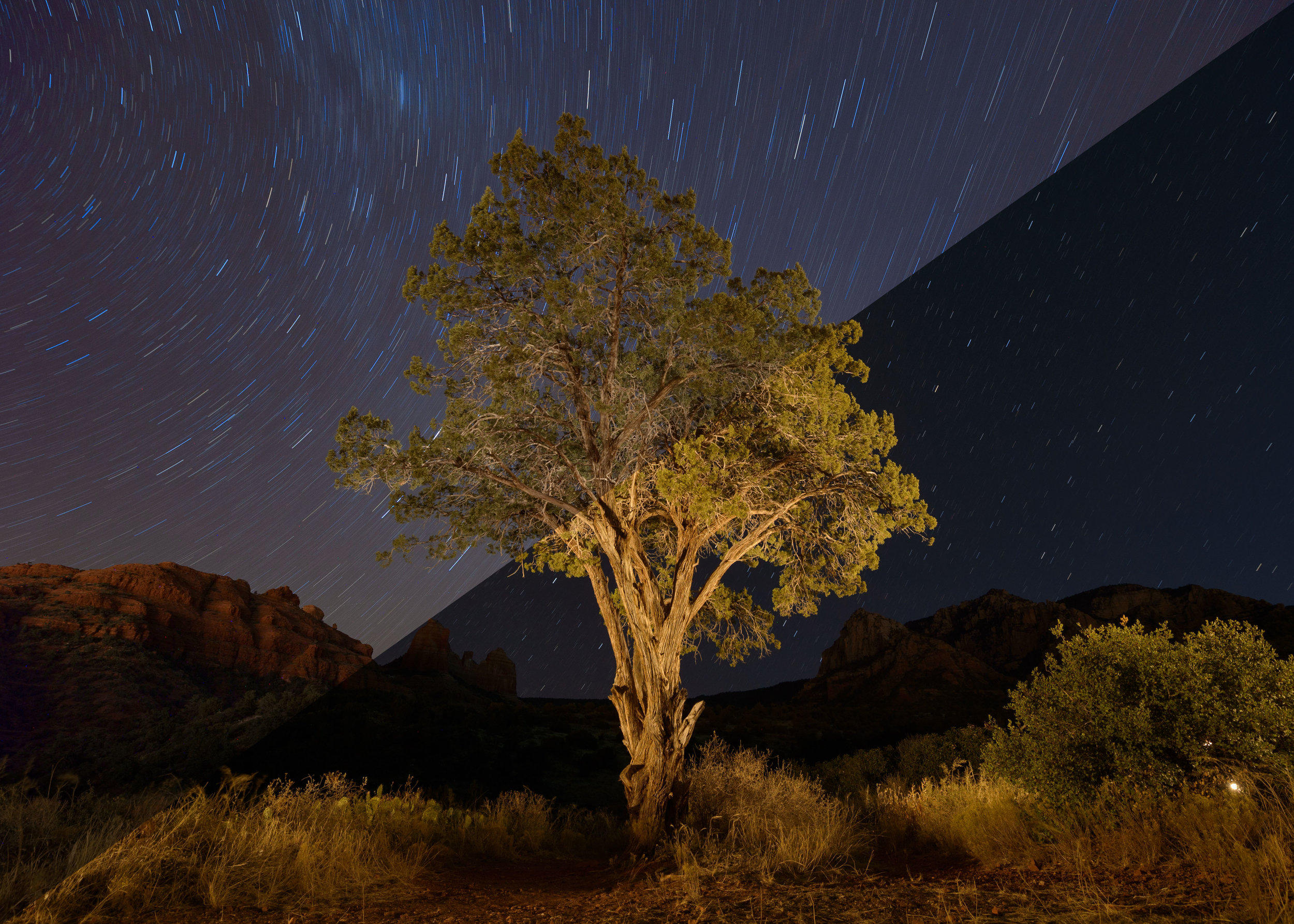
Comet ATLAS and the Milky Way Captured Together in the Mojave Desert

**Dan Zafra Captures Breathtaking Photos of Comet Tsuchinshan–ATLAS in the Mojave Desert**
Travel and astrophotography expert Dan Zafra has once again accomplished an extraordinary feat as part of *Capture the Atlas*. This time, he focused on a rare cosmic event, Comet Tsuchinshan–ATLAS (also referred to as Comet A3), and captured striking images that have left his followers in awe. Since its discovery in early 2023, the comet has been closely monitored by both researchers and amateur astronomers, dazzling viewers during its recent pass by Earth. Zafra was on hand to record this astronomical occurrence from Red Rock Canyon, located just outside Las Vegas.
Although Zafra often journeys to distant, isolated areas for his photography, such as the tundras of Iceland or the deserts of Spain, he chose to remain closer to home this time. A mere 20 minutes from the bright lights of the Las Vegas Strip, Red Rock Canyon offered the perfect setting with its expansive, untouched nature and minimal light pollution. The area’s diverse geological features, remarkable rock formations, and broad night skies created an idyllic backdrop for the comet’s voyage through space.
In Zafra’s wide-angle photograph, the comet appears among the rugged peaks of the Mojave Desert, resembling an otherworldly presence set against Earth’s naturally crafted canvas. He also skillfully incorporated the Milky Way into his composition—a fleeting chance as the galaxy’s prominent band begins to diminish from sight, only to re-emerge during winter. Like the Milky Way, Comet Tsuchinshan–ATLAS is a temporary presence, varying in visibility as it continues its path.
### Capturing the Celestial Visitor
Discovered in January 2023 by astronomers at China’s Purple Mountain Observatory, Comet Tsuchinshan–ATLAS has garnered the fascination of astronomy fans around the globe. The comet has displayed varying brightness since its initial observation, at times fading from view before returning with brief yet spectacular appearances. By September, it had brightened sufficiently to be seen with the naked eye, offering astrophotographers a prime chance to capture remarkable images.
Zafra selected October 20th to document the comet, a moment when it was still shining brightly in the sky even as it began to dim. Just eight days prior, on October 12th, Comet ATLAS had reached its nearest point to Earth—approximately 44 million miles away—and was at its brightest. Nevertheless, Zafra’s photographs still deliver a crystal-clear depiction that allows viewers to envision how luminous it must have been earlier that month.
Unsurprisingly, photographing the comet against the backdrop of the Mojave Desert resulted in some truly stunning work. What adds to the brilliance of Zafra’s images is the graceful way he melds the natural environment with the celestial in a single harmonious shot. The Milky Way, though gradually retreating, is visible reaching upward as if guiding the comet through Earth’s atmosphere.
### The Close-to-Home Advantage
While Zafra is renowned for his work in remote and desirable photography locales, he highlights the significance of discovering beauty in nearby places. The Red Rock Canyon National Conservation Area may not possess the remoteness of some of his other excursions, but it still offered incredible opportunities for a photographer with Zafra’s expertise and vision.
“Certainly, there are more impressive dark skies in numerous areas throughout the Southwest and beyond, and that’s typically where I prefer to go,” Zafra notes. “However, we often overlook that we can also practice, enjoy, and capture beautiful and meaningful images right in our own vicinity.”
This insight reflects a broader truth in photography: that it’s not always about faraway or exotic locations, but rather appreciating—and making use of—what surrounds you. By approaching your environment with creativity and initiative, enchantment can be discovered right outside your door. Zafra’s experience illustrates that remarkable photography can be achieved with minimal travel, as long as there’s a commitment to the craft and a keen eye for detail.
### A Highly Anticipated Astronomical Event
Comet Tsuchinshan–ATLAS, with its erratic fading and reappearance, has been a source of astronomical fascination since its discovery. Named after the Purple Mountain Observatory (known as Tsuchinshan in Mandarin) and the ATLAS initiative that aided in its detection, this comet presents a rare chance for observers to track its captivating path.
As Zafra’s work illustrates, the comet’s brief stint in the limelight serves as a reminder of the ephemeral beauty that the universe occasionally bestows upon Earth-bound spectators. With the